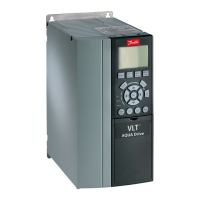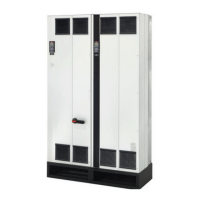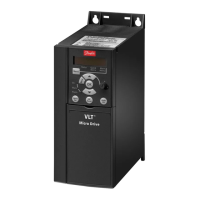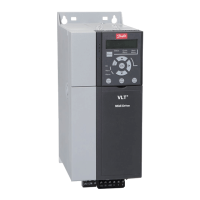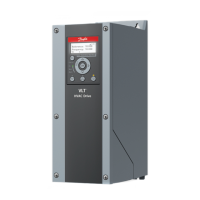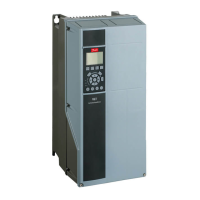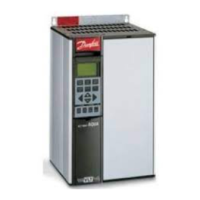3.18 Parameters 21-** Extended Closed
Loop
The FC 202 oers 3 extended closed-loop PID controllers in
addition to the PID controller. These controllers can be
congured independently to control either external
actuators (valves, dampers, and so on) or be used together
with the internal PID controller to improve the dynamic
responses to setpoint changes or load disturbances.
The extended closed-loop PID controllers may be intercon-
nected or connected to the PID closed-loop controller to
form a dual loop conguration.
To control a modulating device (for example, a valve
motor), this device must be a positioning servo motor with
built-in electronics accepting either a 0–10 V (signal from
VLT
®
Analog I/O Option MCB 109) or a 0/4–20 mA control
signal.
The output function can be programmed in the following
parameters:
•
Control card, terminal 42: Parameter 6-50 Terminal
42 Output (options [113]...[115] or [149]...[151], Ext.
Closed Loop 1/2/3.
•
VLT
®
General purpose I/O card MCB 101, terminal
X30/8: Parameter 6-60 Terminal X30/8 Output,
(setting [113]...[115] or [149]...[151], Ext. Closed
Loop 1/2/3.
•
VLT
®
Analog I/O Option MCB 109, terminal
X42/7...11: Parameter 26-40 Terminal X42/7 Output,
parameter 26-50 Terminal X42/9 Output,
parameter 26-60 Terminal X42/11 Output (options
[113]...[115], Ext. Closed Loop 1/2/3).
VLT
®
General purpose I/O card MCB 109 and VLT
®
analog
I/O option MCB 109 are optional.
3.18.1 21-0* Extended CL Autotuning
The extended closed-loop PID controllers can each be
auto-tuned, simplifying and saving time during commis-
sioning, while ensuring accurate PID control adjustment.
To use PID auto-tuning, congure the relevant extended
PID controller for the application.
Use a graphical LCP to react on messages during the auto-
tuning sequence.
Enabling auto-tuning, parameter 21-09 PID Auto Tuning puts
the relevant PID controller into PID auto-tuning mode. The
LCP then provides on-screen instructions.
PID auto-tuning introduces step changes and then
monitors the feedback. Based on the feedback response,
the following required values are calculated:
•
PID proportional gain.
- Parameter 21-21 Ext. 1 Proportional Gain
for EXT CL 1.
- Parameter 21-41 Ext. 2 Proportional Gain
for EXT CL 2.
- Parameter 21-61 Ext. 3 Proportional Gain
for EXT CL 3.
•
Integral time.
- Parameter 21-22 Ext. 1 Integral Time for
EXT CL 1.
- Parameter 21-42 Ext. 2 Integral Time for
EXT CL 2.
- Parameter 21-62 Ext. 3 Integral Time for
EXT CL 3.
The PID dierentiation time is set to 0 in the following
parameters:
•
Parameter 21-23 Ext. 1 Dierentation Time for EXT
CL 1.
•
Parameter 21-43 Ext. 2 Dierentation Time for EXT
CL 2.
•
Parameter 21-63 Ext. 3 Dierentation Time for EXT
CL 3 are set to value 0 (zero).
•
Parameter 21-20 Ext. 1 Normal/Inverse Control for
EXT CL 1.
•
Parameter 21-40 Ext. 2 Normal/Inverse Control for
EXT CL 2.
•
Parameter 21-60 Ext. 3 Normal/Inverse Control for
EXT CL 3.
These calculated values are presented on the LCP and can
either be accepted or rejected. Once accepted, the values
are written to the relevant parameters, and PID auto-
tuning mode is disabled in parameter 21-09 PID Auto
Tuning. Depending on the system being controlled, the
time required to carry out PID auto-tuning could be
several minutes.
Before activating the PID auto-tuning, remove excessive
feedback sensor noise using the input lter (parameter
groups 5-5* Pulse Input, 6-** Analog In/Out and 26-** Analog
I/O Option MCB 109, terminal 53/54 lter time constant,
and pulse lter time constant #29/33).
Parameter Description Programming Guide
MG20OB02 Danfoss A/S © 05/2018 All rights reserved. 169
3 3
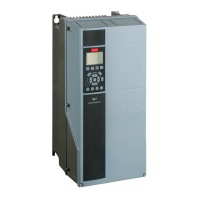
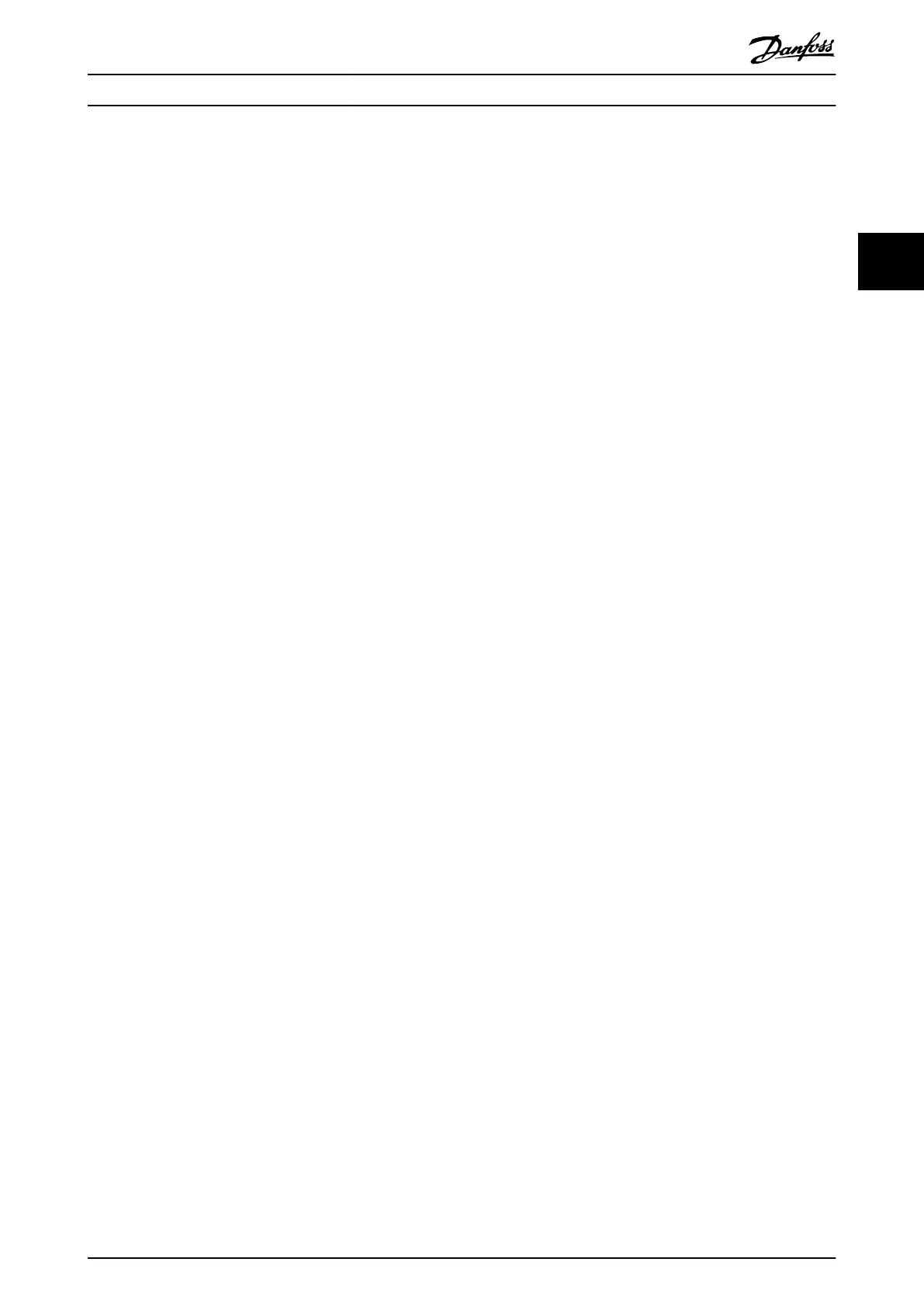